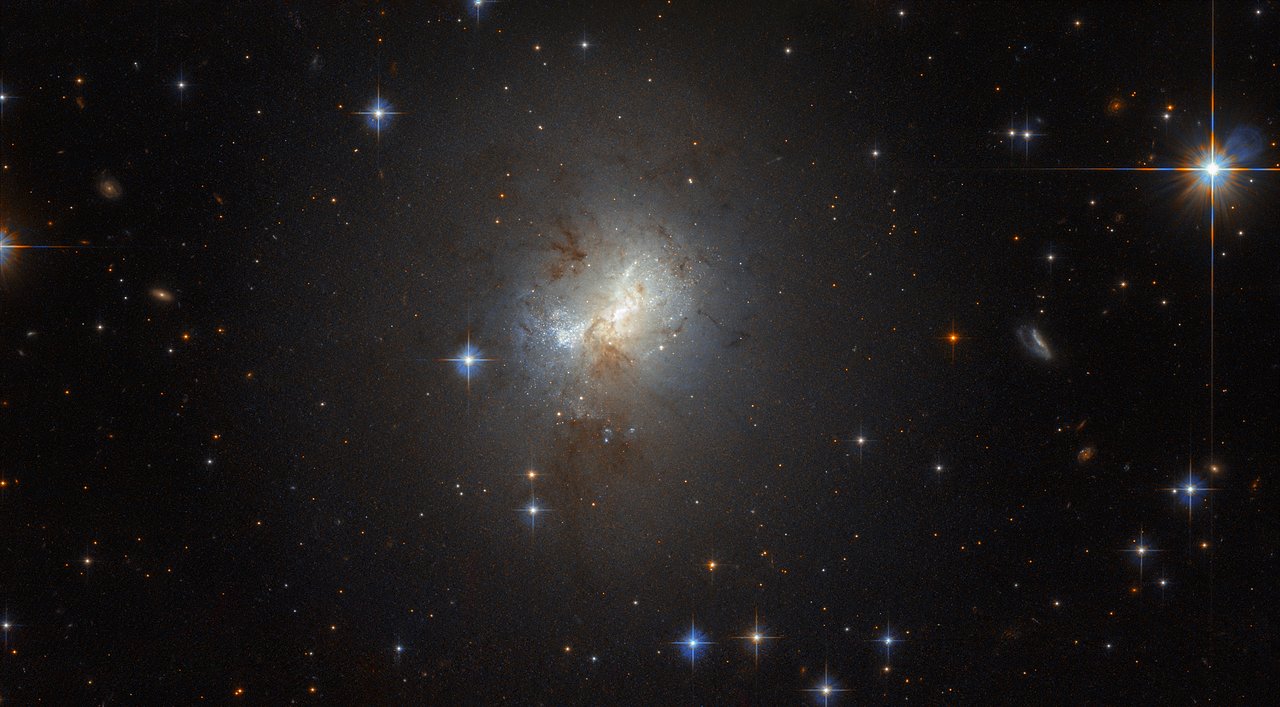
This image gathered by the Hubble Space Telescope’s Advanced Camera for Surveys and the Wide Field Planetary Camera 2 shows the tiny galaxy ESO 495-21, located 30 million light-years away in the constellation of Pyxis (the Compass).
The galaxy is only 3000 light-years across, which is just a fraction of the size of the Milky Way at 100,000 light-years across. But it could hold the clue to unraveling a longstanding question about the evolution of galaxies over time, and what causes a galaxy to grow.
Despite its small size, ESO 495-21 is thought to host a feature usually found in much larger galaxies — a supermassive black hole. These huge black holes sit right in the middle of galaxies and gobble up dust and gas which comes close to them, like the one at the center of our Milky Way. As a general rule of thumb, the bigger the galaxy, the bigger its supermassive black hole. But this little galaxy bucks that trend, seeming to have a black hole at its heart which is over a million times as massive as our Sun.
The possible presence of this black hole could help astronomers understand the way in which galaxies evolve. Currently, they are not sure about how the supermassive black holes develop — it could be that the black holes appear first and then galaxies form around them, or it could be that the presence of many stars forming a galaxy pushes mass together and creates the black hole.
As ESO 495-21 is small and has a high rate of star formation, it is thought to be similar to the galaxies which existed in the earliest stages of the universe. In that case, the fact it seems to have a large black hole suggests that the supermassive black holes develop first, and the galaxies around them form later.



